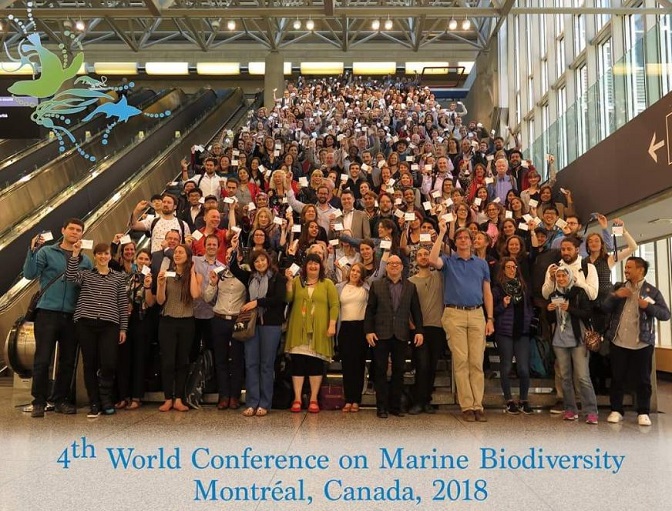Dr. Mariagrazia Graziano, Marine Protected Areas specialist and BIOPAMA Caribbean focalpoint at the Joint Research Centre of the European Commission, represented BIOPAMA at the Conference: she highlighted the role of this programme for data and information sharing on biodiversity conservation and protected areas management.
What are the main results and success achieved by the marine biodiversity conservation community and highlighted during this year Conference?
The conference was really a big event: more than 600 participants came from about 50 different countries. We attended 6 parallel sessions, running from 10:30am to 17:30pm and plenary lessons at 8:30am every morning. It was extremely comprehensive in themes and sessions, featuring a vast array of topics – all related to the marine biodiversity- ranging from molecular biology to big data and machine learning methods.
As scientist, I believe that the participation to this kind of events is crucial to stay tuned and connect with the global scientific community working on biodiversity. Networking is also crucial to link our efforts and to receive constructive inputs by other scientists presenting their most advanced findings and technologies.
What kind of feedback did you receive on BIOPAMA and its future developments?
Our presentation “New technologies for biodiversity assessment” received a fully positive evaluation and was highly participated, about 80 people attended it, the room was full. We presented both BIOPAMA and the RIS 2.0 concepts, highlighting the role of the Regional Observatories, the importance of data sharing and the difficulties we identified in biodiversity data integration at different spatial and time scales. This stimulated the discussion among participants.
What did you get from the Conference and what are you bringing back?
Together with colleagues from the world of marine biology and biodiversity conservation, we had a constructive discussion on the current challenges regarding data/information harmonization. A major challenge identified was to adapt to different spatial scales (global, regional, and local) our reporting tools and/or on which type of data these tools necessitate. Next steps will be to align the BIOPAMA efforts on marine biodiversity data with regional initiatives such as the Global Coral Reef Monitoring Network in the Caribbean.
- UN Environment CEP’s Lucie Labbouz and JRC’s Mariagrazia Graziano at WCMB 2018
- Group picture WCMB 2018





